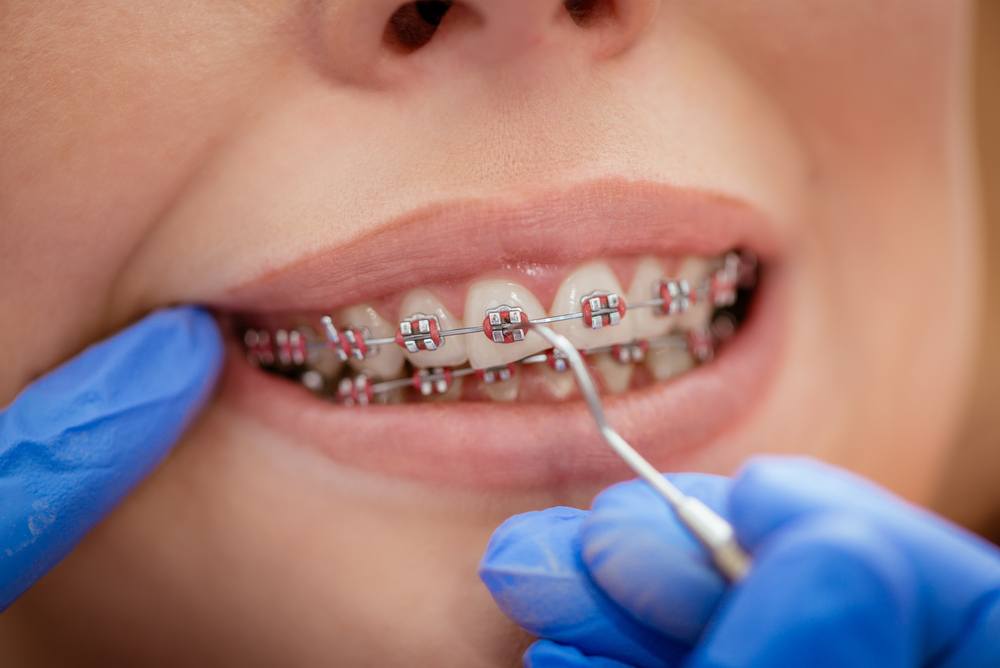Leading Tips for Selecting the Best Cumming Orthodontist for Braces and Aligners
Leading Tips for Selecting the Best Cumming Orthodontist for Braces and Aligners
Blog Article
Comprehensive Guide to Orthodontics Treatments for Correcting Dental Imbalances
Comprehending the details of each treatment, including their systems, benefits, and possible downsides, is essential in making informed choices regarding one's orthodontic therapy. As we navigate with the extensive guide to orthodontic procedures for remedying oral misalignments, the complex details of each method will unfold, shedding light on the course towards a unified and practical oral positioning.
Orthodontic Procedures Review

Along with clear aligners and standard braces, orthodontists may also advise other treatments like headgear, palatal expanders, or retainers to address certain placement concerns (orthodontics). These treatments are tailored to every patient's special needs and may entail a combination of therapies to achieve the preferred outcomes. Regular adjustments and tracking are vital components of orthodontic treatment to ensure progress is on track and to make any type of necessary adjustments along the road. By undergoing orthodontic treatments, patients can not only accomplish a straighter grin but likewise enhance their total oral health and function.
Typical Braces: How They Work
When taking into consideration orthodontic therapies for oral misalignments, traditional dental braces attract attention as a reliable technique for dealing with teeth placing. Standard braces contain braces, wires, and bands that interact to use constant pressure on the teeth, progressively relocating them into the wanted positioning. The braces are affixed to the teeth making use of a special adhesive, and the cords are threaded with the braces. By changing the stress of the wires, orthodontists can control the direction and pressure applied to each tooth, guiding them right into proper placement gradually.
As stress is used to the teeth via the braces, the bone bordering the teeth is improved to sustain the new tooth positions. Individuals will certainly need normal adjustments at the orthodontist's office to guarantee the braces continue to apply the right stress for reliable teeth activity.
Invisible Aligners: Benefits And Drawbacks
These clear, personalized trays are basically undetectable when used, making them an appealing alternative for people seeking a more aesthetically pleasing orthodontic therapy. Clients can remove the aligners before eating or cleaning their teeth, minimizing the danger of food obtaining stuck in the appliance and streamlining the cleansing procedure.

Surgical Orthodontic Options
Surgical interventions in orthodontics existing feasible options for addressing complicated oral misalignments that might not be successfully fixed through conventional orthodontic therapies. While typical dental braces and unseen aligners can deal with many orthodontic problems, particular cases call for medical treatment to accomplish ideal outcomes. Surgical orthodontic options are normally recommended for extreme malocclusions, substantial jaw disparities, and situations where the underlying bone framework needs adjustment to achieve appropriate placement.
One usual medical orthodontic procedure is orthognathic surgery, which includes rearranging the jaws to deal with useful problems such as trouble chewing or speaking. This surgery is often performed in partnership with an orthodontist that aids align the teeth before and after the procedure. Surgical orthodontics may also involve procedures to expose impacted teeth, remove excess periodontal tissue, or reshape the jawbone to develop a more harmonious face account.
Before thinking about surgical orthodontic alternatives, people undertake a comprehensive analysis dig this to figure out the requirement and prospective advantages of such interventions. cumming orthodontist. While surgery may seem challenging, it can considerably improve both the feature and looks of the smile in instances where conventional orthodontic treatments fall short
Retainers and Post-Treatment Treatment

Post-treatment care entails adhering to the orthodontist's instructions faithfully. This may consist of correct dental hygiene techniques, attending follow-up consultations, and wearing the retainers as recommended. Failing to abide by post-treatment treatment directions can cause regression, where the teeth slowly return towards their initial positions. Consistent retainer wear, great dental hygiene, and routine oral examinations are important for preserving the outcomes attained with orthodontic surgery and making sure the long-lasting stability of the corrected oral placement.
Verdict
In conclusion, orthodontic procedures supply numerous options for correcting dental imbalances. Traditional braces use metal braces and cables to shift teeth into appropriate alignment. Unnoticeable aligners give an even more very discreet option yet might not be appropriate for all cases. Surgical orthodontic options are readily available for much more serious misalignments. Retainers are typically used post-treatment to maintain the brand-new placement. Generally, orthodontic procedures can properly improve oral health and wellness and aesthetic appearance.
As we browse with the thorough overview to orthodontic treatments for dealing with dental misalignments, the click this intricate information of each technique will unfold, dropping light on the path towards a useful and harmonious dental positioning. - orthodontics
One of the most usual orthodontic treatments is the usage of braces, which consist of metal braces and cords that apply gentle stress to progressively move teeth into the preferred position.When considering orthodontic treatments for this contact form oral imbalances, typical braces stand out as a tried and true approach for fixing teeth positioning. In addition, invisible aligners may not be ideal for complicated orthodontic concerns that need even more substantial teeth movement, as they are commonly recommended for light to moderate situations. Retainers are tailor-made orthodontic tools developed to hold teeth in their corrected placements after the completion of orthodontic treatment.
Report this page